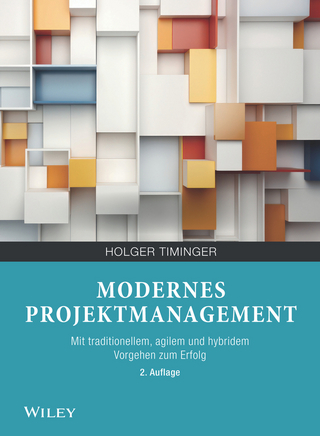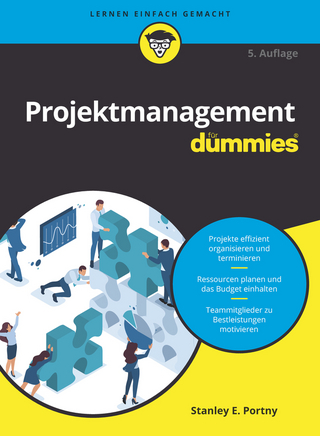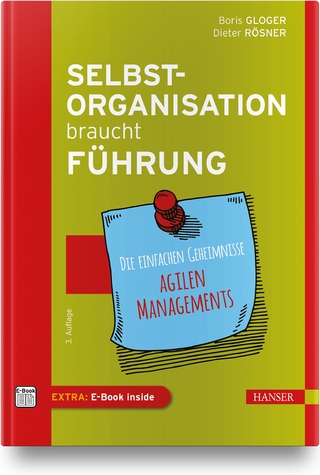
Schedule Delay Analysis
American Society of Civil Engineers (Verlag)
978-0-7844-1436-1 (ISBN)
Schedule Delay Analysis, Standard ANSI/ASCE/CI 67-17, presents guiding principles that can be used on construction projects to determine the impact of delays. Critical path method (CPM) schedules can be of evidential value to demonstrate causation and liability and to apportion delays when they occur on a project. CPM schedules will influence the quantification of delay and, ultimately, whether a party was damaged by a delay.
This standard provides 35 guidelines that allow for segmentation of responsibility for delays to intermediary milestones and project completion dates. The guidelines enable the calculation of delay damages or liquidated damages by using CPM schedule techniques and preparing a schedule delay analysis. Each guideline is accompanied by commentary that explains the reasoning behind and application of that principle. Topics include scope and definitions; critical path, float, and early completion; chronology of delay, concurrent delay, and responsibility for delay; changing schedules after the fact, and acceleration.
Standard ASCE 67-17 reflects the best engineering principles associated with schedule delay analysis, as well as the standard of practice in the U.S. construction industry. It is an essential reference for construction engineers, project managers, owners, and contracting agents.
ACKNOWLEDGMENTS
1 INTRODUCTION
2 SCOPE
3 DEFINITIONS
4 CRITICAL PATH
4.1 Because the Critical Path is Dynamic, Delays Should be Evaluated Based on the Critical Path During
Each Delay
4.2 Contemporaneous Schedules Should be Maintained to Reflect Actual Performance, the Plan to Complete the Work, and Delay, Should it Occur
4.3 Delay Must be Critical to the Current Adjusted Completion Date for Consideration of a Time Extension
4.4 Delay Should Generally be Measured by the Change to the Scheduled Completion Date Caused by the Delay
4.5 Excusable Delays are Typically Events Outside the Contractor’s Control and Entitle the Contractor to a time Extension
4.6 In Situations Where the Completion Date is Adjusted Properly for Change Orders and the Contractor is Behind Schedule, Owner Delays that Occur Thereafter on a Separate Path may have a Mitigating Effect on Assessment of Damages
4.7 For A Delay To Be Compensable, it should be the Sole Cause of Delay
5 FLOAT
5.1 Activities with Float are not Critical
5.2 Float is Owned by the Project
5.3 Excessive Constraints on Activities that Interfere with a Logic-driven Critical Path may Complicate Evaluation of Critical Delays and Should be Considered in a Delay Analysis
5.4 If Multiple Milestones have Delay Damages Associated with them, a Separate Delay Analysis Should be Performed for each Milestone
6 EARLY COMPLETION
6.1 A Plan to Finish Early Should be Reasonable
6.2 Generally, the Contractor may be Allowed to Collect Delay Damages to an early Completion Schedule but may not Collect an Excusable Time Extension Until the Scheduled Completion Date Exceeds the Contract Completion Date
7 CHRONOLOGY OF DELAY
7.1 Delays Should be Evaluated as they Occur in Chronological Sequence
7.2 A Schedule Delay Analysis should Reflect an Analysis of Prior Entitlement so as to Reflect a Current Adjusted Completion Date Prior to Evaluating Delay
7.3 Consideration should be Included as to how Delays were Evaluated by the Participants During the Project
7.4 Evaluation of Delay Chronology should be Documented and Supported with Contemporaneous Records
8 CONCURRENT DELAY
8.1 Concurrent Delay can be Described as a Situation where Two or More Critical Delays are Occurring at the same time During all or a Portion of the Delay Time Frame in which the Delays are Occurring
8.2 Concurrent Delay Typically is Excusable but Noncompensable, Meaning a Time Extension is Given but no Costs are Recovered by Either Party
8.3 Concurrent Delay should be Apportioned where Possible
Schedule Delay Analysis v
9 RESPONSIBILITY FOR DELAY
9.1 A Schedule Expert Typically can Identify the Party Responsible for a Delay from the Contemporaneous Records, Interviewing Project Personnel, and Reading Deposition Testimony, and may Rely on Technical Experts or Fact Witnesses in Opining on Liability
9.2 During a Project, the Contractor should Provide the Owner with a Notice of Delay for Excusable Delays, Followed by a Request for a Change in Accordance with the Contract
9.3 Responsibility Analysis should be Supported by a Factual Chronology Based on the Contemporaneous Project Performance Records and Referencing the Remedy Granting Clause of the Contract
9.4 The Schedule Expert should Attempt to Discuss the Issue with the Individual Directly Involved and Who has Factual Knowledge of the Delay Issue, where Feasible
9.5 Schedule Experts should not Opine Beyond their Expertise. if Necessary, a Technical Expert should be Engaged on whose Opinion the Schedule Expert can Rely
9.6 Once a Technical Expert’s Finding as to which Party was Liable for the Delay Event is Formed, a Legal Review may be made with Counsel Consistent with Legal Precedent in the Project Jurisdiction
10 CHANGING SCHEDULES AFTER THE FACT
10.1 The Schedules should be Presumed Correct as they were Used During the Project, Unless Otherwise shown to be Inaccurate
10.2 After-the-fact Changes to Schedules Used During the Project should be Minimized and only made where Necessary
10.3 Any Changes made to the Contemporaneous Record of Project Schedules should be Carefully Identified and Documented
10.4 When Possible, the Preference for Dealing with Inaccurate Schedules after the Fact is to make Corrections, Rather than Abandon the Schedules, Subject to the Nature and Scope of the Corrections
10.5 Changes to Schedules Generally may be made to Correct Necessary Physical or Contractual Constraints but Typically not the Contractor’s Preferential Sequencing
11 ACCELERATION
11.1 Parties have the Right to Voluntarily Accelerate, Subject to Contract Terms and Conditions
11.2 For Owner-directed Acceleration, the Parties should Agree on the Acceleration Plan Prior to Implementation. The Right to direct Acceleration Unilaterally should be Addressed by Contract
11.3 Constructive Acceleration can be Proved
11.4 When Implementing an Acceleration Plan, Acceleration of Multiple Paths in the Schedule may be Required
12 REFERENCES
| Erscheinungsdatum | 08.12.2017 |
|---|---|
| Reihe/Serie | Standards ; ANSI/ASCE/CI 67-17 |
| Verlagsort | Reston |
| Sprache | englisch |
| Maße | 229 x 279 mm |
| Gewicht | 120 g |
| Themenwelt | Technik ► Bauwesen |
| Wirtschaft ► Betriebswirtschaft / Management ► Projektmanagement | |
| ISBN-10 | 0-7844-1436-X / 078441436X |
| ISBN-13 | 978-0-7844-1436-1 / 9780784414361 |
| Zustand | Neuware |
| Haben Sie eine Frage zum Produkt? |
aus dem Bereich


